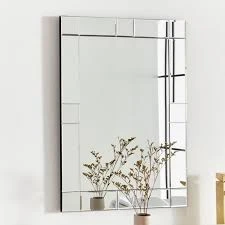

The Allure of Tinted Mirror Glass A Versatile Element in Modern Architecture
In the ever-evolving world of architectural design, materials play a pivotal role in the aesthetics and functionality of buildings. One such innovation that has gained considerable traction is tinted mirror glass. This unique material, combining the reflective properties of mirrors with the light-filtering qualities of tinted glass, offers a myriad of benefits, making it a popular choice among architects and interior designers alike.
Aesthetics and Design Flexibility
Tinted mirror glass serves as both a visual statement and a practical component in architectural design. Its reflective surface creates a captivating interplay between light and shadow, allowing structures to embody a dynamic quality that changes with the time of day and the perspective of the viewer. The tinted aspect mitigates glare and enhances privacy while still permitting a significant amount of natural light to penetrate the interior. This feature is particularly advantageous in urban settings where buildings are closely situated to one another.
Additionally, tinted mirror glass is available in various shades, from subtle grays to vibrant bronzes, allowing designers the freedom to select tones that harmonize with their overall vision. This versatility extends beyond exterior applications; tinted mirror glass can be effectively used in interior spaces to create striking focal points, enhance spatial perception, and evoke a sense of luxury.
Functional Benefits
Beyond aesthetics, tinted mirror glass boasts numerous functional benefits. One of its primary advantages is its energy efficiency. By reducing solar heat gain through its tinted surface, it aids in regulating indoor temperatures. This characteristic can significantly decrease the reliance on air conditioning systems, leading to lower energy consumption and reduced utility costs. Consequently, buildings equipped with tinted mirror glass not only contribute to sustainability efforts but also promote a more comfortable living or working environment.
Moreover, its reflective surface contributes to enhanced visibility. In commercial spaces such as retail stores, tinted mirror glass can be used to showcase products dramatically, capturing the attention of potential customers while simultaneously creating an illusion of spaciousness. In high-rise buildings, the use of tinted mirror glass can decrease the urban heat island effect, making cities more comfortable during scorching summers.

Privacy and Security
Privacy is another key consideration in architectural design, especially in densely populated areas. Tinted mirror glass effectively provides a barrier against prying eyes while still allowing those inside to enjoy outdoor views. This quality makes it an ideal choice for residential buildings, commercial offices, and public spaces such as hotels and restaurants. By promoting a sense of seclusion without sacrificing natural light, tinted mirror glass allows inhabitants to enjoy their surroundings without compromising their privacy.
In addition to privacy, the security aspect of tinted mirror glass cannot be overlooked. Its robust composition can deter break-ins, while the reflective exterior can confuse potential intruders. This makes tinted mirror glass an attractive option for structures that prioritize safety and security without compromising on style.
Sustainability and Longevity
In today's environmentally-conscious society, the demand for sustainable construction materials has never been greater. Tinted mirror glass aligns with these values, as many producers focus on eco-friendly manufacturing processes and recyclable materials. This not only reduces the carbon footprint associated with building projects but also ensures that structures can be adapted or repurposed in the future without significant environmental impact.
Furthermore, tinted mirror glass is known for its durability and resistance to weathering, helping to maintain aesthetic appeal over time. This longevity makes it a wise investment for homeowners and architects alike, providing long-term savings and minimizing the need for frequent replacements.
Conclusion
Tinted mirror glass has firmly established itself as an integral element in modern architectural design. Its fusion of beauty and practicality offers endless possibilities for creating stunning, energy-efficient structures that prioritize both aesthetics and functionality. As architects continue to push the boundaries of creativity, tinted mirror glass will undoubtedly play a key role in shaping the skylines and interiors of tomorrow. With its unique qualities, this material not only enhances the visual impact of buildings but also contributes to a more sustainable future as the industry evolves.